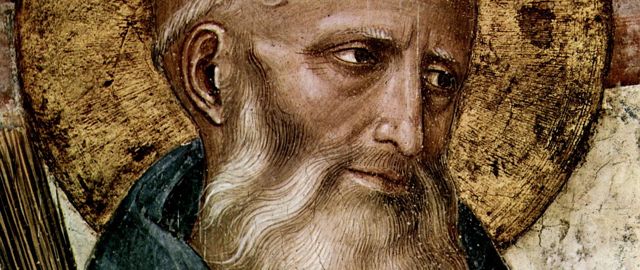
St. Benedict of Norcia demonstrates an example of leaving a lasting legacy.
St. Benedict was born to a family of Roman nobility around the year 480 A.D. and left home circa 500 A.D. He took his old nurse as a servant and settled down about forty miles from Rome. Benedict ran into the monk Romanus of Subiaco, who gave him the monk’s habit. Benedict lived as a hermit for three years. During Benedict’s period of solitude, Romanus visited him and brought him food. He secured the respect of those around him, so that when the abbot of a local monastery died, the community asked him to become their abbot. After several attempts by his monks and other priests to ruin his reputation and end his life, Benedict left Subiaco in 530 and founded 12 monasteries in the area. He then went to a hilltop between Rome and Naples and founded the great Benedictine monastery of Monte Cassino in 530. Pope Paul VI named him the patron protector of Europe in 1964.
St. Benedict’s greatest contribution is The Rule of St. Benedict. It acts as a guide for monks on how to live a holy life as a monk and run a monastery efficiently. The Rule served as the foundational document for thousands of religious communities during the Middle Ages. He established the rule Ora et Labora, meaning pray and work, which encourages monks to equally divide the day into sections of prayer, sleep, and manual labor, reading, or works of charity. The early Middle Ages have been referred to as “the Benedictine Centuries” because of his influence on the development of Western Europe. He created the modern model for monastic life in the Catholic Church. St. Benedict allowed Europe to emerge from the Dark Ages following the fall of the Roman Empire. The Benedictines have two branches of religious orders today: The Benedictine Federation and the Cistercians.
“St. Benedict exercised a fundamental influence on the development of European civilization and culture.”
-Pope Benedict XVI
